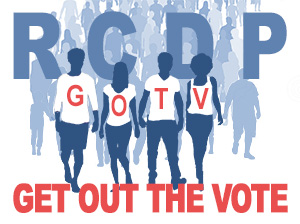Social media presents new, powerful and rapidly evolving tools that can help build volunteer participation in your precinct and support for Democratic causes.
Always stop, reread, and consider before hitting “Post.” Once something is published, it can never be completely erased.
Focus your posts on local and state candidates and issues. Avoid inflammatory speech.
- Getting Started with Facebook
- Create a Facebook page for your precinct, with initial profile and cover photos/images. If you have never set up a Facebook page before, reach out to a friend or fellow precinct president for help.
- “Pin” a post to the top of the page with policies for what is shared.
- Ask precinct volunteers to “like” your page and to “share” postings.
- Post frequently when you have an activity coming up. You can create a separate event page and use it for RSVPs. Take photos during the event and use them in a post-event update.
- If possible, include a photo or graphic image with every post. It increases viewing.
- Keep your text brief – 30 words or less with a photo/graphic/link, 100 words or less if plain text.
- Facebook Posts
Post about local, state and national political issues, Democratic candidates and elected officials, volunteer opportunities, and precinct or Democratic Party activities. For example, you can:- Announce what your precinct and the county party are doing to elect Democrats
- Share posts by local, state and national Democratic candidate campaigns
- Highlight what current Democratic office holders are accomplishing
- Hold Republicans accountable for the injurious impact of their policies, legislation
- Share relevant online media articles
- Getting Started with Twitter
- Choose a Twitter Handle that easily identifies your precinct. Set up profile and cover photos or graphics.
- Write a short bio that sets expectations for what you’ll be tweeting about.
- Our advice is to focus your posts on local state candidates and issues. Avoid inflammatory speech.
- Twitter is especially suitable for sharing links to volunteer and event pages, press releases, and other resources.
- “Retweeting” in Twitter is like “Sharing” in Facebook.
- The “what” of Twitter is pretty much the same as for Facebook except more compact (there is a word count limit).
- Other Social Media Options
- Instagram is good for sharing photos and images of your events. If you are graphically inclined, you could create “memes” to share, as well. Engagement can be very high on Instagram (lots of people love to flip through images) but interaction and calls-to-action are less suited to this platform. If you choose to use Instagram, it should probably be used in conjunction with Facebook or Twitter for more engagement. OPTIONS NOT RECOMMENDED AT THIS TIME:
- Snapchat is geared toward content that is temporary and is not recommended at this time for use as a precinct organizing tool.
- Meetup can be useful if you plan to have frequent meetings and events, but it costs money to post events. For this reason, we recommend using the Events feature on Facebook instead of Meetup.
- YouTube is a very popular platform, but unless you are a video/multimedia enthusiast, it is probably too difficult to use this tool as part of your organizing efforts.
